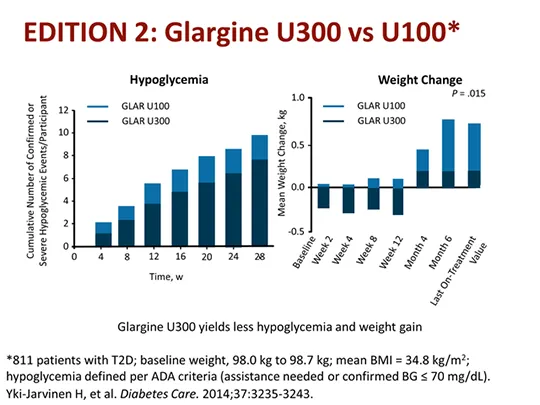People with type and type diabetes can achieve a better glycemic control with threeiba (insulin degludec) in clinical practice against patients treated with u100 glargine insulin, without increasing their risk of hypoglycemia, according to the results that emergeof a post-hoc analysis of the Switch 1 and 2 trials published this Wednesday at the 54th Annual Meeting of the European Association for the Study of Diabetes (EASD 2018) held in Berlin (Germany).
According to this analysis, based on the reduction of the risk of hypoglycemia with threeiba during the maintenance period of switch tests, it is estimated that people with diabetes can achieve an average reduction in glycosylated hemoglobin of 0.70 percent in type one diabetesand of 0.96 percent in type two diabetes with threeiba compared to insulin Glargina U100 against similar hypoglycemia rates.
"This treatment can help diabetic people control their blood sugar"
Risk reduction of hypoglycemia
"Hypoglycemia episodes can be dangerous for people with diabetes and, often, constitute an important barrier to achieve glycemic control," said Mads Krogsgaard Thomsen, Executive Vice President and Maximum Scientific head of Novo Nordisk.
"These results are added to the evidence already published, showing a reduction in the risk of hypoglycemia with threeiba and providing more confidence in the way this treatment can help people with diabetes to achieve blood sugar control."
This post-hoc analysis is based on data on patients from Switch 1 and 2.
Both studies showed significantly lower rates of general symptomatic hypoglycemia regarding Insulin Glargina U100 in people with type one diabetes.


